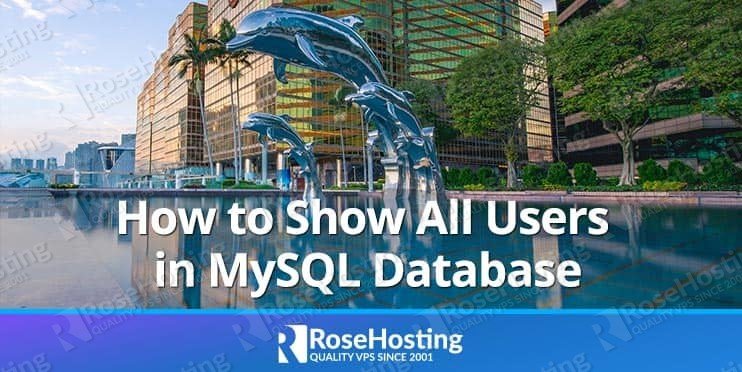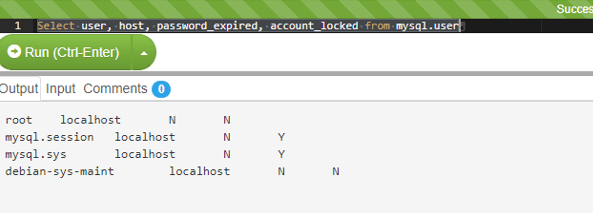

So now the “real problem”, how could we list only the roles and not the users ? Now the user and I will assign it the dbt3_reader role: mysql> CREATE USER dbt3_user1 IDENTIFIED BY 'password' Mysql> GRANT SELECT, INSERT, UPDATE, DELETE ON dbt3.* TO dbt3_writer Mysql> GRANT SELECT ON dbt3.* to dbt3_reader As the syntax is very easy, I think this doesn’t require more explanation.įirs the roles, one to read the data and one able to write data: mysql> CREATE ROLE dbt3_reader I will first create two different roles and one user. So let’s have a look at how we could differentiate our roles and list them. In most OpenSource RDBMS, a role is in fact an alias for a user but without a login.Īs I always like to say, if there is not solution, there is no problem, isn’t it ? 😉 The main point is about making the difference between users and roles. Of course he also made some remarks on things he would have done differently.

Giuseppe Maxia is doing a great job testing and promoting them (thank you for that!). I’ve already quoted them before in some posts ( here and here). As you may already know, MySQL 8.0 is coming with SQL Roles.

To provide a specific user with a permission, you can use this framework: GRANT ON.
#Mysql list users update
Will work with all DB only UPDATE : allow them to update table rows GRANT OPTION : allows them to grant or remove other users' privileges PROCESS : allows them to check running process. REPLICATION CLIENT : allows them to check replication/slave status.

Various permissions that you can grant to a user are ALL: This would allow a MySQL user all access ALL PRIVILEGES : This would allow a MySQL user all access CREATE : allows them to create new tables or databases DROP : allows them to them to delete tables or databases DELETE : allows them to delete rows from tables INSERT : allows them to insert rows into tables SELECT : allows them to use the Select command to read through databases SHOW VIEW : allows them to show view schema. SHOW DATABASES : allows them to show databases. You need to do it step by step, in two steps: CREATE USER IDENTIFIED BY 'some_strong_password' GRANT SELECT, SHOW VIEW ON *.* TO FLUSH PRIVILEGES Īdditional Read only Permissions are SHOW VIEW : allows them to show view schema. Finally, show the granted privileges of user to verify FLUSH PRIVILEGES SHOW GRANTS FOR or IP_address' If you know the host name or IP address of the host that the collector is will be installed on, type the following command: GRANT SELECT ON database_name.* TO or IP_address' Įxecute the following command to make the privilege changes saved and take effect. GRANT SELECT ON database_name.* TO command gives the user read-only access to the database from the local host only. Omitting this information will only allow the user to connect from the same machine. You can limit the access by defining the host from where the user can connect. The % in the command above means that user report can be used to connect from any host.
#Mysql list users password
Type the password for the root account.Ĭreate a new MySQL user account. First, login as a MySQL administrator from your terminal / command prompt using the following command: mysql -u root -p


 0 kommentar(er)
0 kommentar(er)
